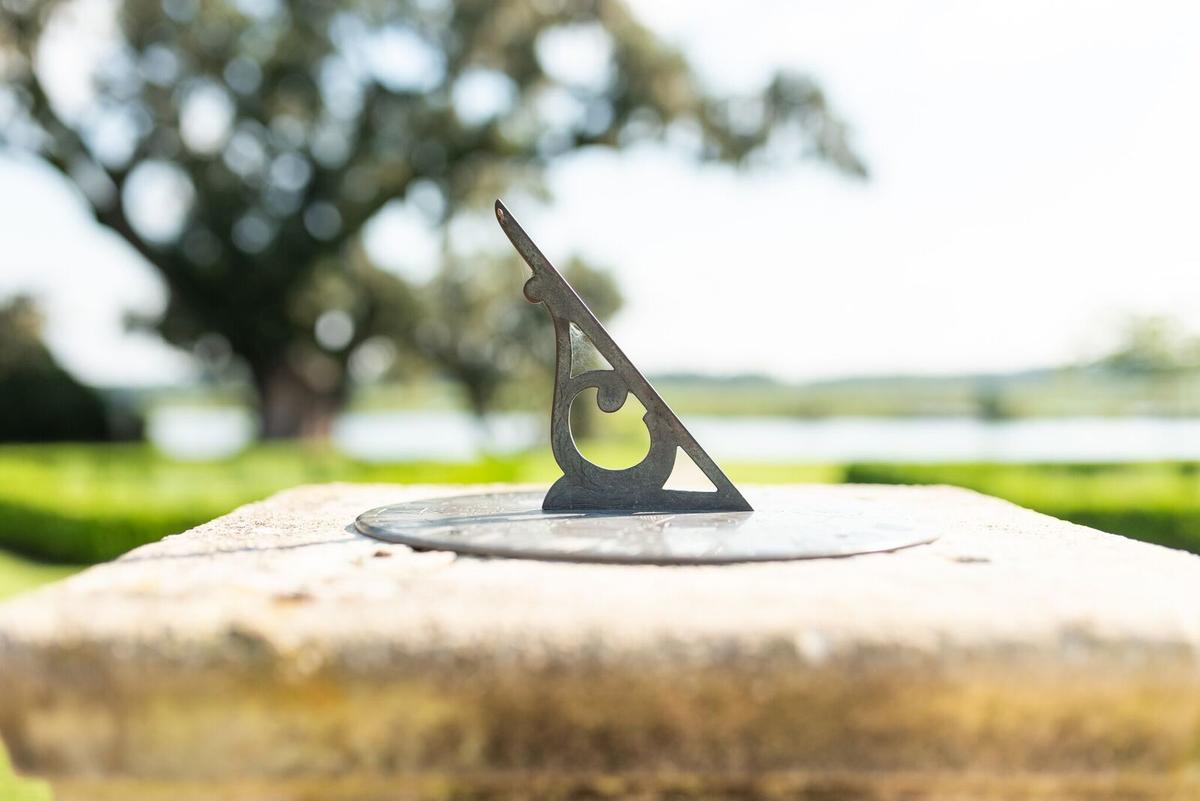
Keely Laughlin Photography
Middleton Place was overgrown and neglected after the Civil War, but in the early twentieth century, a direct descendant of Henry Middleton, J.J. Pringle Smith, inherited the property and spent many years restoring and enhancing the estate. In 1972, Middleton Place was declared a National Historic Landmark.
Cypress Lake – This lake is unique because it has trees growing in the water and has azaleas surrounding it. It’s the swamp-iest place I’ve seen in Charleston.
“Wood Nymph” – Here you will find the marble figure of a sandal binder by Rudolph Schadow. Many family-owned statues were destroyed during the Civil War, but this one remains.

Keely Laughlin Photography
Sundial and Rose Garden – The gardens are set up with particular attention to rational order, geometry, symmetry, balance, vistas, focal points and other surprises. This delightful sundial is found at the center point of the two diagonal axis of the gardens.
The Secret Garden – The secret garden is a small, intimate garden where homeowners or guests could retreat. This one contains classical sculptures of The Four Seasons.
Bosquet and Tomb – A bosquet is a formal plantation of trees, but within it, there is an unkempt wilderness area. It is here that you will find a family tomb. There is a marble stone marking the family line just a few feet away.

Keely Laughlin Photography
The Mill – Middleton Place was a working rice plantation, and this structure is where enslaved peoples would work the rice fields. Tidal changes allowed water flowing from the pond at low tide to power the Mill’s turbine.
Spring House and Plantation Chapel – The lower level of this structure was used to store dairy products and other foods. It was cooler on the bottom level because of the spring waters. The upper floor was used as a chapel for the slaves.
The Stables – The plantation was self-supported by both free and enslaved workers. In addition to farm animals like cows, horses, goats, sheep and chickens, the Middletons had Water Buffalo imported from Constantinople to work in the rice fields. Here you will also see a carpentry shop, blacksmith shop, and the carriage house.
Eliza’s House – The last stop on the tour is “Beyond the Fields,” which interprets the lives of thousands of enslaved people who lived and worked on Middleton plantation. This two-family dwelling provides evidence of domestic conditions of the African American community both before and after the Civil War.
Thanks to Keely Laughlin Photography for the photographs.